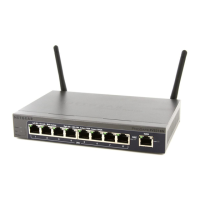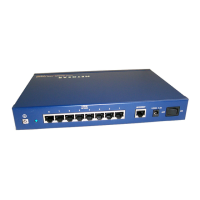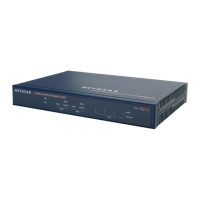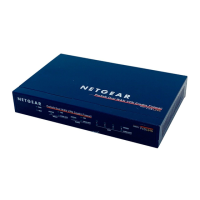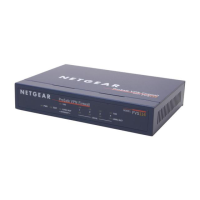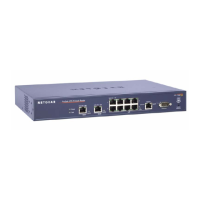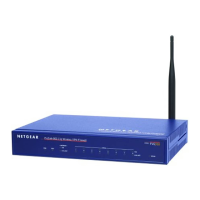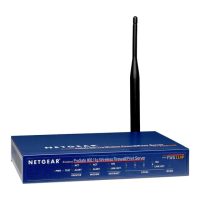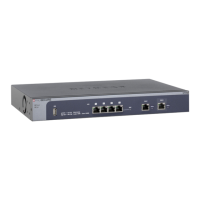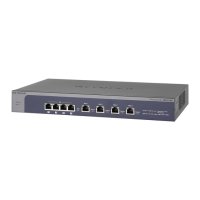Network and System Management
324
NETGEAR ProSAFE VPN Firewall FVS318G v2
- Groups. The rule is applied to a group of computers. You can configure groups for
LAN WAN outbound rules but not for DMZ WAN outbound rules as follows.
• The Known PCs and Devices table is an automatically maintained list
of all known
computers and network devices and is generally referred to as the network
database. For more information, see Manage the Network Database on page 73
.
• Computers and network devices are entered into the network databa
se by various
methods. For more information, see Manage IPv4 Groups and Hosts (IPv4 LAN
Groups) on p
age 71.
• WAN users. Y
ou can specify which Internet locations are covered by an inbound rule,
based on their IP address:
- Any. The rule applies to all Internet IP address.
- Single address
. The rule applies to a single Internet IP address.
- Address range. The rule ap
plies to a range of Internet IP addresses.
• Schedule
. You can configure three different schedules to specify when a rule is applied.
Once a schedule is configured, it affects all rules that use this schedule. You specify the
days of the week and time of day for each schedule. For more information, see Set a
Schedule to Block or Allow Specific Traffic on
p
age 195.
• Bandwidth profile. Y
ou can define bandwidth profiles and then apply them to inbound
LAN WAN rules to limit traffic. (You cannot apply bandwidth profiles to DMZ WAN rules.)
For information about how to define bandwidth profiles, see Create Bandwidth Profiles on
p
age 180.
Port Triggering
Port triggering allows some applications running on a LAN network to be available to external
applications that would otherwise be partially blocked by the firewall. Using the port triggering
feature requires that you know the port numbers used by the application. Without port
triggering, the response from the external application would be treated as a new connection
request rather than a response to a request from the LAN network. As such, it would be
handled in accordance with the inbound port forwarding rules, and most likely would be
blocked. For information about how to configure port triggering, see Configure Port Triggering
on page 206.
DMZ Port
The demilitarized zone (DMZ) is a network that, by default, is configured with fewer firewall
restrictions when compared to the LAN. The DMZ can be used to host servers (such as a
web server, FTP server, or email server) and provide public access to them. The eighth LAN
port on the VPN firewall (the rightmost LAN port) can be dedicated as a hardware DMZ port
to safely provide services to the Internet without compromising security on your LAN. By
default, the DMZ port and both inbound and outbound DMZ traffic are disabled. Enabling the
DMZ port and allowing traffic to and from the DMZ increases the traffic through the WAN
ports.

